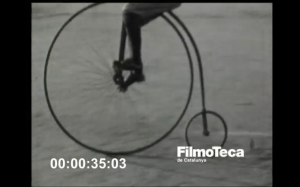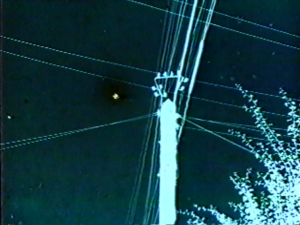"In view of the increasing use of substandard motion pictures for practical purposes by scientific and professional men and women, it is to be expected that among the ten best would appear a surgical film. Philip A. O'Connor, of Rochester, N. Y., filmed A Reparative Operation for a Congenital Defect, which was performed by Dr. William L. Wolfson, of Brooklyn, N. Y., and this film is included by Movie Makers in this annual listing because of two chief reasons. This very delicate operation required a large degree of manipulation by the surgeon, without the use of instruments, which adds to the danger of the operator's obscuring the field of vision and, consequently, to the difficulty of securing a clear motion picture record of his work. In spite of this handicap, the admirable cooperative effort between surgeon and photographer enabled Mr. O'Connor to present an exceptionally visible study of Dr. Wolfson's technique. In the second place, the film gave a complete record of the entire operation, from start to finish, including the preliminary anesthesia. Whatever hazards may have existed photographically were so easily hurdled by Mr. O'Connor that the person viewing the film is almost unconscious of the fact that it is a film. Needless to say, the technical photographic details of exposure, focus and lighting were of the highest order." Movie Makers, Dec. 1933, 500.
"Reportaje Grafico Nacional: Alvaro Chavarria Nunez, who aspires to producing newsreels in his native Costa Rica, presents in this entry a typical effort. The picture is a newsreel of several national events held in this country, and while it displays aggresive camera work, the film result, a dupe print, suffers a great deal because of inferior laboratory work, and therefore the true quality of the photography could not be properly evaluated. Nunez recorded the sound track, using his Auricon film recorder." American Cinematographer, May. 1951, 192.

(Catalan): Film que recrea un documental esportiu del 1900 amb una bona dosi d'ironia. Se succeeixen escenes de ciclisme, futbol, jocs diversos, atletisme i banys a la platja; rodat a 16 imatges per segon (manualment), afegint rètols virats amb decoració i fons antics, i posant una especial cura en la indumentària dels personatges, tot amb la finalitat de donar una major versemblança al film.
Film that recreates a 1900 sports documentary with a good dose of irony. It includes scenes of cycling, football, athletics, and bathing on the beach follow one another. In order to give greater credibility to the film it was shot at 16 frames per second (manually), adding colour intertitles with antique decor and backgrounds, and putting special care into the characters costumes. [Description from the Filmoteca de Catalunya catalog]

"Experimental film. A collage film combining found footage (on mixed film stock) with hand-painted stock and hand-scratched stock leader. No readily identifiable locations are shown." (BC Archives)
"The authorship and origins of this unusual film are not clear. Since it was found in the collection of cineaste Oscar C. Burritt [following his death], it is assumed to have been made by him as a precursor (or a response) to the [experimental] film and-, made by his future wife Dorothy Fowler [Burritt]. The Kodachrome stock in the original film has the edge code for 1938; the hidden phrase "Help the people of Denmark" may refer to the Nazi occupation of that country in 1940." (BC Archives)
Available evidence suggests that residue 2 was probably made between 1938 and 1946 in Vancouver. (D.J. Duffy)
"Film about the Woodley family’s attempts at Sunday morning relaxation when the Woodley boys are away at Sunday School." Library and Archives Canada.
"Several people, differing widely in age and character, and all requiring a quiet break, rent a country cottage, 'Resthaven'. Due to a booking mix-up, they arrive at the same time. A storm, a surly caretaker and smuggling activities cause further complications before all is happily resolved for the visitors." (EAFA Database)
"This amateur film attempts to portray conflict within a religious sect where blind adherence to a selfish demanding leader is compared to the freedom offered by progressive contemporary society" Library and Archives Canada.
"Film of picturesque scenes of water." Library and Archives Canada.
Total Pages: 299